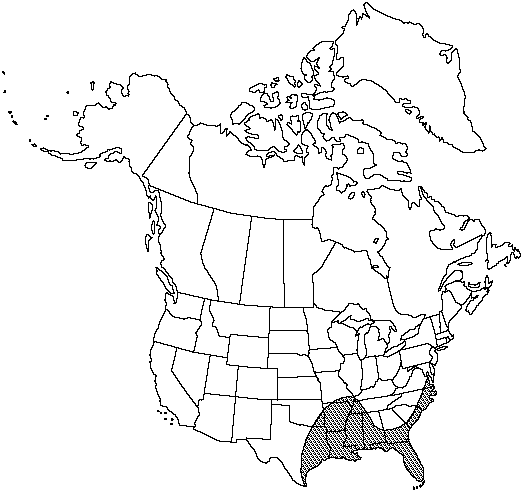Ophioglossum petiolatum
Exot. Fl. 1: 56. 1823.
Roots dark-brown, to 8 per plant, 0.8-1.3 mm diam., producing proliferations. Stem upright, 0.3-1 cm, 1.5-2.5mm diam., 2-3 leaves per stem. Trophophore stalk 0-3mm, 0-0.1 times length of blade. Trophophore blade erect to spreading, usually plane or nearly so when alive, gray-green, dull, ovate to trowel-shaped, to 6 × 3cm, fleshy, cuneate to truncate to nearly cordate at base, contracted gradually to acute apex, apiculum mostly absent; venation coarse, reticulate, areoles large with few free or anastomosing included veinlets. Sporophores arising at ground level, 0.8-7 times length of trophophore; sporangial clusters to 4 × 0.35 cm, with up to 30 pairs of sporangia, apiculum 0.3-1.2 mm.
Phenology: Leaves appearing during wet periods.
Habitat: Plants sometimes weedy in lawns, ditches, and around buildings
Elevation: 0-90m
Distribution

Introduced; Ala., Ark., Fla., Ga., La., Miss., Mo., N.C., Okla., S.C., Tex., Va., West Indies, Mexico, n South America, Asia, Pacific Islands
Discussion
Ophioglossum petiolatum grows readily in pots, making it suitable for botany instruction. Earliest records in North America date from 1900 to 1930, suggesting that it is probably introduced.
Selected References
None.